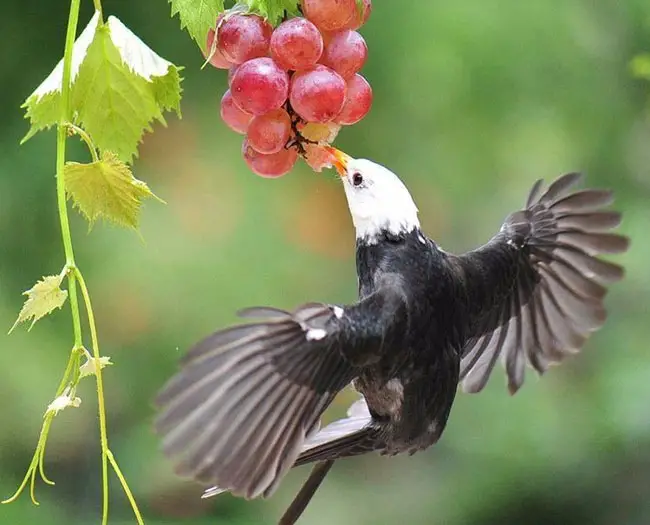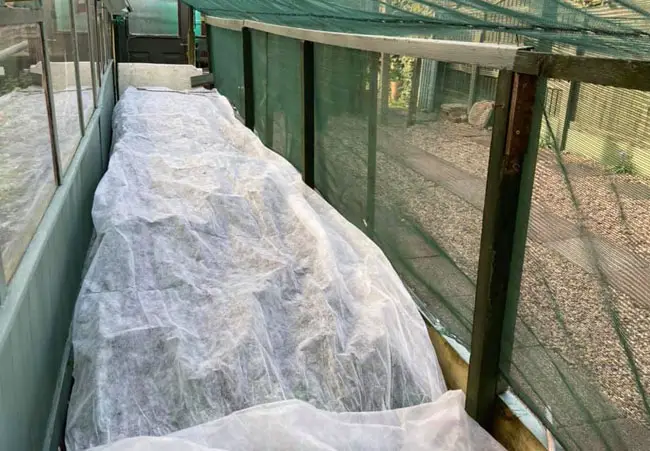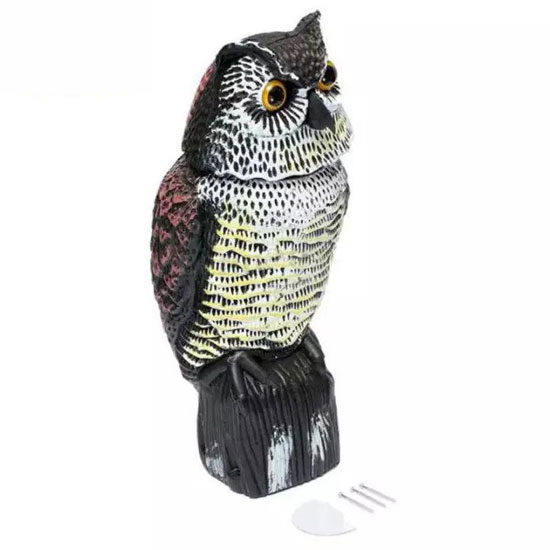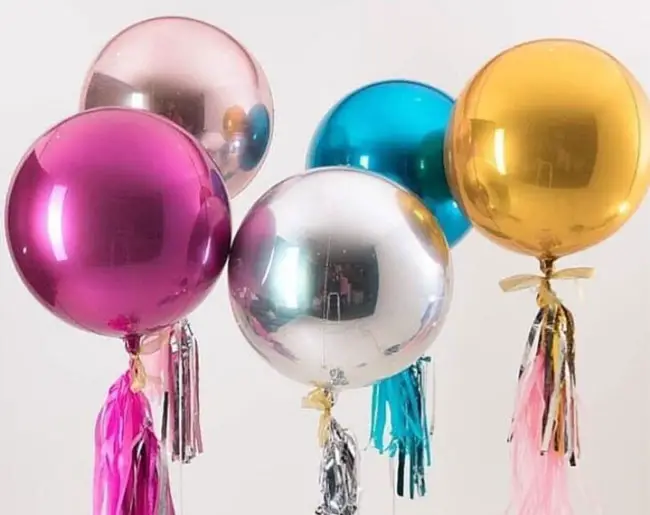Everyone loves birds. That is until they start tearing up your garden. If birds are ruining your crops, you might just be scratching your head, wondering what in the world you can do about it? What are the best ways of keeping birds out of your garden? Well, we might have a few solutions for you.
If birds keep getting into your garden and you’re looking for a solution that doesn’t involve harming them, you’ve come to the right place. We’ll discuss the 9 best home remedies for keeping birds out of your garden in the following sections. We’ll review exactly how each method works and give our recommendations for when we think they’re individually appropriate.
What Home Remedies Keep Birds Out of Your Garden?
You can practically and humanely keep birds out of your garden with strategies like using special netting to block them out or putting up reflective material to scare them away. There are actually many other ways that you can try if one way isn’t working out for you.
Much of what you’ll need to do to keep your garden bird-free is trial and error. Different species of birds can vary in their reactions to certain deterrents. Also, your environment will play an important factor as well.
For instance, using the reflective object method will be far more successful in a place that gets a lot of sunlight. If you live in an area with a lot of smog or cloud coverage, it may not be optimal. Instead, in that instance, you might want to try something less dependent on bright light.
The following 12 ways to keep birds out of your garden will aid you in your trial and error process.
Put Up Garden Netting to Keep Birds Out
Garden netting is one of the most common tools used to protect gardens from birds. Generally, these nets have holes with a small diameter to prevent birds from reaching them but big enough that insects like bees can still pollinate.
When you put up your garden netting, you must build a frame to make sure the netting doesn’t interfere with the growth of the leaves. It’s not particularly important what the material is made from as long as it holds the net away. Some have even suggested simply using spare branches you find lying around. Alternatively, you could use PVC pipes as well.
Garden netting is perhaps the most recommended tool there is when it comes to keeping birds away. It’s not a coincidence that it’s also one of the most effective. This makes for a great starting point in your trial and error process.
Protecting Seedlings and Smaller Plants Before Netting
When your plants are still seedlings or small enough, it’s not a bad idea to use chicken wire to protect them for a while until they get a little larger. You can place the chicken wire over them when they’re still seedlings and then slowly elevate it over time.
When they’re a little bit larger, you can use a cone of netting or screen to protect them for a while. Just remember eventually you’ll want to switch to standard garden netting so that your plants can have the space to grow and can still be accessible to insects like bees or butterflies.
Protect Smaller Plants With Garden Fleece
Many gardeners like to use garden fleece during the cold season to protect their smaller crops from falling prey to frost. Still, garden fleece can work to protect your smaller plants from birds all year round.
You don’t necessarily have to build a frame the way you do with garden netting with the fleece. Instead, you can lay the fleece overtop crops you want to protect and then use anything heavy to weigh it there.
Try Using a Screech Owl to Scare Birds Away
No, this isn’t the actual living eastern screech owl, but rather a decoy screech owl that emits a sound to scare away approaching birds. Usually, the sound of a screech owl is meant to replicate the same sound as a given predator, such as a hawk.
The effectiveness of screech owls is often said to be done at an ultrasonic frequency so humans can see it. Still, enthusiasts claim that one of these decoys will ensure that most birds stay away from your garden without you having to hear a thing.
Controversy Over the Utility of Screech Owls
It should be noted that there is some controversy over whether or not the ultrasonic sounds coming off of screech owls and other similar devices has anything to do with their ability to deter birds.
Orthodontist Dr. Rob Fergus points out that “the truth is that birds do not actually hear these ultrasonic sounds any better than humans do, and there is no scientific evidence that these devices actually work.” He cites several studies that back up the notion that birds cannot, in fact, hear at this frequency.
All this is not to say that a screech owl can’t work at all. It still could deter other animals with its sound, and the visual appearance may affect birds anyway. So if you’ve tried this and had success, don’t completely write it off. If it’s not working for you, however, this is likely the problem.
Alternatives to the Screech Owl
A screech owl isn’t the only imitation of a predator that will keep your garden bird free. You could also use anything from a scarecrow to a toy plastic snake. Either way, they should be placed in an area that the birds can clearly see. If you’re using plastic snakes, you might want to put a couple around your garden.
There are advantages and disadvantages to each deterrent that you might want to keep in mind. We’ve already discussed the controversy around the ultrasonic sounds a screech owl makes.
With plastic snakes, problems can arise from their limited visibility, whereas scarecrows can be too visible and may not go with the visual aesthetic you want for your garden. These are all things you should consider when trying to find the right deterrent for you.
Whichever one you choose, you’ll want to make sure that you move it around periodically. Birds will start to notice if Old Man Scarecrow has been standing in the same place for the last month. The best way to continue to thwart them is to change things up.
Put Up Reflective Materials to Shield Your Garden From Birds
Most birds don’t like sudden movements or bright lights. They perceive them as potential predators and thus avoid them. You can use this to your advantage by putting up some reflective material in and around your garden.
Small reflective materials that will protect your garden include:
- Mirrors
- Used CD’s
- Pinwheels
At the end of the day, there isn’t really a specific material you need. Just make sure whatever you use will reflect the light. A lot of people find that their old CDs are just the right size and use them. Others merely like to pick up small mirrors for a more elegant look. Whatever fits you will be fine.
As far as placement goes, you’ll want to spread your reflective objects of choice around your garden. It’s a good idea to give them a little room for movement, so they send out the light in multiple directions. You can achieve this by hanging them on strings from the trees around your garden.
Use Mylar Balloons to Save Your Garden
Mylar balloons scare birds away with their menacing size, movement in the wind, and reflective surfaces. Generally, they are attached to ribbons or string and allowed to drift back and forth in the wind, sending reflections of light in all directions to warn birds not to approach.
Mylar balloons are one of many options when it comes to balloon bird deterrents. There are also brightly colored scare balloons that kind of act like inflatable scarecrows as well. Like with the Mylar balloon’s menacing figure, swaying back and forth will make birds think twice about your garden.
Common Mistake with Balloon Deterrent
One of the most common mistakes people make when using any balloons–be they mylar or simple scare balloons–is that they don’t realize the balloons must have some degree of movement to succeed. If you put them in a static position, you may come outside to find birds nearby it.
It’s best if you can tie whatever balloons you’re using to shiny ribbons that will also reflect light and help deter birds from landing in your garden. Even if the ribbon is short and tacked on a fence or a tree, it will allow the necessary movement.
Try Using Garden Balls to Ward off Birds
Similar to the balloons, garden balls scare birds away with reflective surfaces and colorful designs. These shimmering spheres should be placed all around the garden. When the birds fly in close, the reflectiveness along with the bright designs will startle them and prevent them from landing in your garden.
Along with the standard garden, balls are some smaller ones that are usually strung together and meant to be hung up. If you have a few trees surrounding your garden or a fence, they could make an ideal place to hang these.
Use Adhesive Bird Scare Tape to Free Your Garden From Birds
Another powerful reflective deterrent is adhesive bird scare tape. Bird scare tape comes in a regular tape roll. You can run it around the edges of your garden to create a nice reflective barrier. You can also cut off pieces and tie them to places like fence posts to act as reflective ribbons.
Just remember that after a while, the birds may grow used to the tape and land anyway. To avoid this, you should routinely change up your strategy and move some of the reflective pieces around,
Try Using Wind Chimes to Startle the Birds
Wind chimes are a great deterrent on many levels. They’re generally reflective so that they can work similarly to mylar balloons and mirrors/reflective surfaces. At the same time, they emit sounds that are pleasing to people but potentially startling to birds.
The only potential downside to these is that the birds may grow used to them and come towards the garden anyway. You can move them around periodically to keep the birds on their toes and make them less likely to approach them.
Try Building Popsicle Stick Fences Around Certain Plants
In truth, you could use popsicle sticks or even just plain old regular sticks from your yard. Either way, this method is great for protecting specific plants. What you do is push your sticks or popsicle sticks into the ground around the plant in question, creating a tiny fence. Oftentimes, this will be enough to deter most birds.
Grow Plants That Attract Birds Away From Your Garden
Birds love all kinds of different plants. However, they love some more than others. One of the best ways to lure birds away from your garden is to find out what those others are and plant them far enough away from your garden that the birds will be thoroughly distracted. You can think of this as a sort of bribe for the birds.
As for which plants are the most optimal, it might depend on the bird species in your area. However, there are several plants out there that will attract most birds.
The following plants work well at attracting the most common species of bird:
- Sunflowers: This is really the penultimate plant when it comes to attracting birds. The only potential downside is some people may not like how tall they can grow.
- Black-Eyed Susan: Black-eyed Susan is a better option if you’re looking to be more discreet. While they’re clearly visible, they blend in more with their wild look and shorter height.
- Daisies: Who doesn’t love Daisies. These flowers are just as good for decoration as they are for bird deterrence.
Just remember not to get too carried away, as too many of these plants might ultimately attract even more birds onto your property.
Use Bird Feeders to Lead Them Away From Your Garden
Going hand in hand with the previous tip, you can use bird feeders to lead the birds away from your garden. Just be sure that you place it far enough from the garden that they won’t finish one meal and turn your crops into their next.
Also, be careful not to overfeed them. Overfeeding can be just as unhealthy for them as it is for humans. It’s recommended that you change out their bird feed once every five to seven days. If you’re doing it more often than that, you may negatively affect the birds and make them overly reliant on you.
Before you go out and buy a bunch of bird feed, you might want to spend some time watching the birds that land in your yard. If you can identify them, you can sweeten the deal by picking out a more optimal bird feed.
Use Garlic Oil to Repel Birds From Your Garden
Garlic oil can work as a great bird repellent. You need to spread a little around your garden and the plants you’re most worried about. Some people also recommend coating some birdseed in the oil and spreading it around the surrounding garden.
This works because both the taste and the smell of garlic are noxious to most birds. When they come into the land, they will smell the oil and turn the other way. If a really unlucky bird comes in for a taste, they’ll get more than they bargained for and likely not come back for a while.
This makes a great alternative to the chemical bird repellents you find on the market. Some brands can be dangerous for the birds and the plant life that surrounds your garden. If your goal is to deal with them humanely, then garlic oil is the way to go.
What is the Best Way to Keep Birds Out of a Garden?
There are many ways to keep birds from disturbing your garden, and none of them can really claim to be the very best. There are variables like what kinds of birds live in your area, your weather, and how big your garden is that will contribute to which works best for you. Therefore the best thing you can do is a little trial and error.
A good place to start your trial and error process is garden netting. Garden netting is not only one of the most successful methods, but it’s also great for allowing bees and butterflies to pollinate properly. If you try this approach but feel like you need a little more defense, you can try anything from a scarecrow to putting up mirrors around your garden. Either way, you got this.
Read also:
- Easy Ways to Keep Pests Out of a Garden
- Squirrel Proof Your Bird Feeder With a Squirrel Baffle






